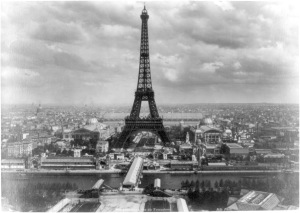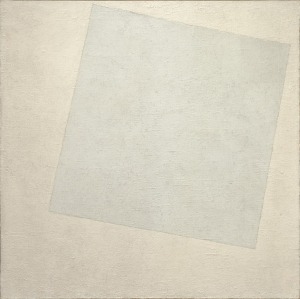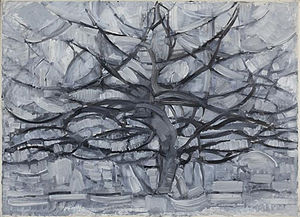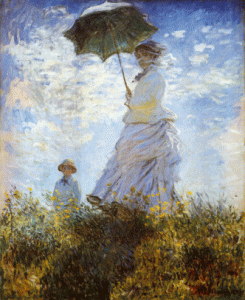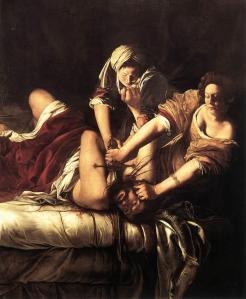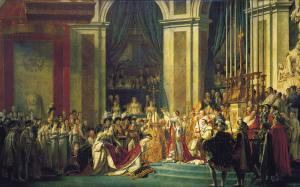Faces can reveal so much about a person, an emotion, an idea, a concept, really anything. They can also hide just as much. With faces it is both the presence and the absence of certain pieces that make up an expression. Utilizing them in art adds another dimension. Just as faces are unique to each individual, each artist creates a unique face each time they sit down to paint a portrait.
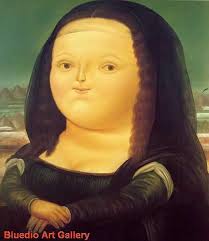
“Mona Lisa” by Fernando Botero was created in 1978, in Colombia. His art style is interesting, because his chubby characters seem more like a kind of parody than anything else. Botero is actually an abstract artist because of the ideology and process behind his paintings, which he says that he begins to paint before he even knows what the end result will be. This piece in particular is an interesting tribute to the Mona Lisa, as the strange art style is so far removed from the delicate and graceful figure of the original portrait as to make it almost seem grotesque if it were not still poised.
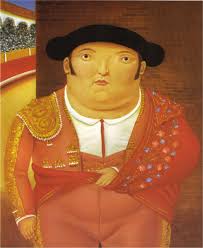
“Matador” is another one of Botero’s works, created in 1984 in Colombia. This one is interesting because Botero actually left matador school, and his dream of becoming a matador, to become an artist. Bullfighting and the arena were some of the first subjects for his work. His love of the fight is shown in his art, depicting festive, colorful celebrations and the traditional clothing as well. I think his pieces lend an extra expression to expressionless characters through his odd artistic style. For example, the way the matador is built is different from his Mona Lisa. His matador is stout, but heavily built, with his chest being very broad, as though his character was inherently proud of his craft. The feminine figure of the Mona Lisa is warped, but still gives way to gentle curves, and emphasizes the head more than anything else, framing the face instead.
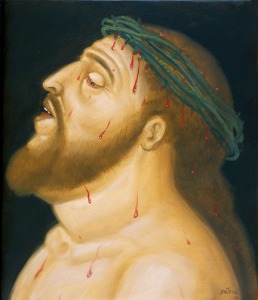
Botero’s “Cabeza de Cristo” was created in 2010 in Colombia. Many of his works have to do with religious themes, many of which focus around Christ the savior. This piece is unusual, I think, because Christ is in profile. Not many of his works are in profile like this, but it adds to the dramatic appeal of the piece. The question is then left to the viewer, what does Christ see? It may be his tormentors or his loving heavenly father. The picture is very dramatic, dripping blood and wearing a crown of thorns with a pitch black background for emphasis. The pudgy Christ figure, while odd as few depictions are ever anything but thin or unhealthy, starving body shapes, is strangely compelling. I feel like it makes the Christ figure more human, because the strain is so obvious, rather than showing Christ as an idea it makes him a person. The pain is clearly shown, with the panting mouth and drooping, red eyes.
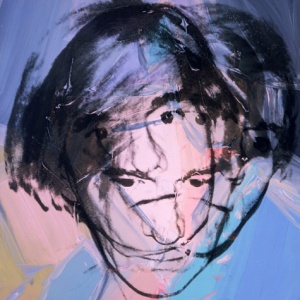
Andy Warhol’s “Self Portrait” was created in 1978, in America. Warhol’s subjects were well known objects and people. He created art to demystify it, making it look cheap and colorful, as though anyone could have done it. Among his famous faces was his own. He frequently used his own face in his art, making himself just as much of an icon as Marylyn. This one I find particularly interesting because of the angels. To be able to see one face in several different angles at once gives a new depth, making the subject appear to have more dimension or motion, even on flat, colorful silkscreen paintings.
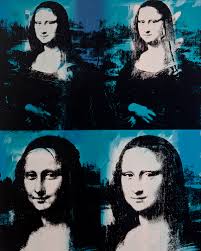
Andy Warhol’s “Mona Lisa Four Times” was created in 1978 in America. This piece I find especially interesting because of the different expressions that can be seen from slight changes in each of the repetitions due to the silkscreen medium. The vague smile of the Mona Lisa can be seen in sharp contrast to her skin as well as fading into the picture, making interesting contrasts, and a whole new take on an old classic.

Andy Warhol’s 1986 “Self Portrait” was created in America. He often used his stark pale complexion to the fullest effect when painting himself. He made his own image into his artist’s persona. This piece was made a year before his death, and shows him wearing a pale wig to compliment his complexion, and make the image stand out more. It’s interesting to see how Warhol can mess around with the way he displays shadows, as his work is made up of colored and dark areas for the most part, and relies heavily on contrast. The end result is starling and somewhat haunting, a fitting portrait for an artist entering his last year.
“Biography.” Fernando Botero. FernandoBotero.com, n.d. Web. 29 July 2015. <http%3A%2F%2Fwww.fernandobotero.com%2F>.
Botero, Fernando. Cabeza De Christo. 2010. Oil on canvas. Botero Museum, Bogota.
Botero, Fernando. Matador. 1984. Oil on canvas. Botero Museum, Bogota.
Botero, Fernando. Mona Lisa. 1978. Oil on canvas. Botero Museum, Bogota.
“Fernando Botero: 1932—: Artist – Trained As Bullfighter.” Artist-Trained-Bullfighter. Net Industries, n.d. Web. 29 July 2015. <http%3A%2F%2Fbiography.jrank.org%2Fpages%2F3285%2FBotero-Fernando-1932-Artist-Trained-Bullfighter.html>.
“Freeing the Feminine Other.” Freeing the Feminine Other. Csudh.edu, n.d. Web. 29 July 2015. <https://www.csudh.edu/dearhabermas/poemhyp40.htm>.
Warhol, Andy. Mona Lisa Four Times. 19. Acrylic paint and screenprint on canvas. The Art Institute of Chicago, Chicago.
Warhol, Andy. Self Portrait. 1978. Acrylic paint and screenprint on linen. The Andy Warhol Museum, Pittsburgh.
Warhol, Andy. Self Portrait. 1986. Acrylic paint and screenprint on canvas. New York and DACS, London.
